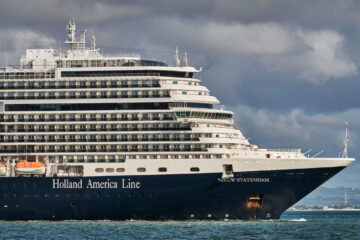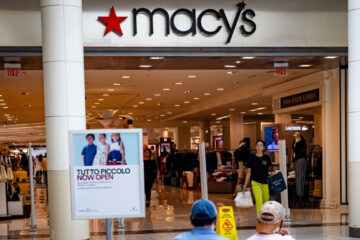The major cruise lines have faced a dark couple of years, but smoother seas (and higher prices) might be ahead.
Cruise prices are a moving target. Cruise lines use a formula based on demand where prices change depending on how sailing is selling. Customers usually get the best deals by booking early, but that can vary if an individual sailing struggles to fill up.
To further complicate matters, Royal Caribbean (RCL) – Get Royal Caribbean Group Report, Carnival Cruise Lines (CCL) – Get Carnival Corporation Report, and Norwegian Cruise Lines (NCLH) – Get Norwegian Cruise Line Holdings Ltd. Report generally offer different prices for different pools of customers. Your price may be impacted by your loyalty program tier, how much you gamble, whether you are a senior citizen, and a few other variables.
It’s not a transparent process. None of the three cruise lines want to leave money on the table so they use algorithms and variable pricing that requires customers to either book a cruise at a price they’re happy with and then forget about it or book and continually check prices (you can often get onboard credit for differences if the cost of your cruise goes up after you book it).
Despite those pricing variables, prices have been below average since Royal Caribbean, Carnival, and Norwegian returned from their pandemic closures in July. However, that may change soon.
Image source: Daniel Kline/TheStreet
Are Royal Caribbean, Carnival, and Norwegian Raising Prices?
Cruise lines never announce they’re raising prices because pricing isn’t transparent, and some sailings might be offered at a discount even when prices are generally higher. However, executives from all three major cruise lines did comment on prices during their most-recent earnings calls.
“From a cumulative booking standpoint, our book load factors for sailings in the second half of this year remain within historical ranges at higher prices, both with and without the impact of FCCs [future cruise credits]. Load factors in the first half are below historical ranges as expected but are aligned with our anticipated load factors,” Royal Caribbean CFO Naftali Holtz said during his company’s fourth-quarter earnings call.
Carnival CEO Arnold Donald spoke about pricing during his company’s first-quarter earnings call, too.
“We did maintain price as we said we would, and we fully expect an extended wave season. In fact, we’re already achieving occupancies in the month of March that are nearing 70% with more than 40 sailings exceeding 100% occupancy, a testament to the underlying demand for cruises and closer in nature of booking patterns,” he said.
CFO David Bernstein made it clear that prices have gone up for future sailings.
“We continue to expect that occupancy will build throughout 2022 and return to historical levels in 2023. And importantly, I am happy to report that prices on these bookings for the second half of 2022 continue to be higher with or without future cruise credits,” he said. “Our cumulative advanced book position for the first half of 2023 continues to be at the higher end of the historical range, also at higher prices.”
Norwegian CEO Makes His Pricing Plans Clear
Norwegian CEO Frank Del Rio also shared optimism on pricing but took a harder line than his peers during his remarks on his company’s fourth-quarter earnings call.
“Pricing for 2022 and 2023 sailings remained higher for the full year versus 2019 and pre-pandemic 2020, respectively, even when including the diluted effect of future cruise credits,” he said. ” Our core go-to-market principle of marketing to fill versus discount to fill is performing like a champ as we have not and will not chase short-term occupancy by sacrificing price, which only results in long-term and perhaps even permanent damage to brand equity as we have seen over the years in other situations.”
The pandemic created a unique (hopefully) situation that limited demand for cruises. As that demand rebuilds as pandemic-related protocols and restrictions fall away, Royal Caribbean, Carnival, and Norwegian gain pricing power. That should send prices higher, although you’ll likely still find deals.
Generally, higher prices benefit the cruise lines as long as they don’t cause demand to drop. That’s not likely to be a problem in the second half of 2022, assuming the impact of the pandemic continues to fade and fuel prices (and potential surcharges) don’t put pressure on the cruise lines’ profit.


